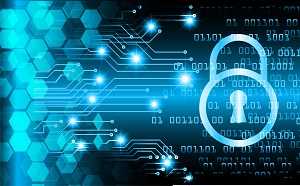The business gains of data-driven processes are legion. Additional revenue streams, decreased costs, and improved productivity are some of the many benefits ascribed to leveraging big data technologies for analytics and data management.
Nonetheless, the digitalization implicit to the big data ecosystem has also created a new set of risks that can potentially compromise any enterprise value earned from such technological investments. The rash of cyber security woes, accompanying political ramifications, data security issues, and increased regulatory requirements—in addition to your average disaster recovery scenario—is much more pressing than it ever was when information was kept on spreadsheets.
Moreover, nearly each of these postmodern concerns is related to a superseding concept that’s becoming more important with each new breach or regulatory transgression: data sovereignty.
“Ultimately, it’s about controlling your data,” reflected BackupAssist CEO Linus Chang. “Data sovereignty—storing American data in America—is becoming such a big issue. Why is that? Because we can’t necessarily trust foreign entities.”
Data sovereignty involves, yet ultimately transcends, merely preserving a company’s data on its native soil. At a corporate level it also includes protecting that data from hackers (several of which are becoming motivated by political reasons), successfully navigating the cloud landscape, maintaining network availability and, as Chang implied, preserving control over enterprise data at all times.
By prudently coupling data backups with timely restoration options, organizations can preserve data sovereignty for unassailable business continuity during times in which it’s needed most.
The Nature of the Threats
Although the data sovereignty issue is typified by events on the international stage, it impacts nearly every small and mid-sized business engaged in big data-centric practices. The current U.S. President has recently taken measures to reduce the foreign influence of popular online entities such as Tik Tok, which are allegedly compiling information about users for possible governmental purposes. Other allegations about the machinations of Russian infiltrators in the previous presidential election still abound, particularly in light of the impending November election. Data-driven organizations must contend with the following threats for control of their data:
- Conventional Cyber Crimes: Exemplified by ransomware attacks, these infiltrations are usually perpetuated by individuals or organizations seeking monetary gain for compromising data systems. “A lot of these hackers are using automated tools,” Chang mentioned. “Some even use AI based tools to find and penetrate networks.”
- State Sponsored Cyber Crimes: The formality of this threat is astounding. According to Chang, these crimes are implemented by the leadership of rogue nations to internationally disrupt business. “The government sets up these hackers and they run it just like a business,” Chang explained. “You go into work and you start hacking, you exploit, negotiate the ransom, and… work a 9 to 5 job.”
- Disingenuous Cloud Providers: The full intricacies of public cloud providers are rarely understood prior to signing Service Level Agreements. Hidden costs, proprietary formats, and egress fees all underpin vendor lock-in, limiting the enterprise’s ability to control its data.
- Regulations: Cloud providers have the potential to flout regulations about where an organization’s information is. With datacenters across international boundaries, these entities could easily failover data somewhere outside of what’s regulatory permissible for companies.
- Catastrophes: Organizations must contend with both manmade disasters (such as fires or exfiltration attempts) as well as natural ones.
Business Continuity
Many of these issues surrounding the expanded definition of data sovereignty at an individual corporate level are ameliorated by business continuity, which is predicated on amalgamating aspects of backups, recovery, and ongoing network availability. One of the most effective backup strategies involves implementing systems that remotely grant onsite and offsite copies of data alongside remote recovery options. Data are backed up in two phases: from disk to disk and from disk to the cloud. This approach is critical for effecting business continuity during the current health crisis in which administrators might not have access to physical locations for traditional disk-based backups.
During the initial phase “the disk to disk is a dry image of your server,” Chang remarked. In the second phase the backup is replicated to a cloud of the customer’s choice. These backups are automated or unattended, ensuring a degree of resiliency that’s essential to business continuity. According to Chang, “They’re done using different technologies. So let’s say a hacking attack manages to compromise your Windows domain and your Windows password. The cloud component uses a completely different protocol. So…that second component is not going to be vulnerable to the same attack that compromised the first component.” The array of recovery options is also instrumental to business continuity; it includes local and remote recoveries on virtual or physical machines.
Ransomware
Ransomware is arguably the most feared threat data-driven organizations face, and certainly one of the more expensive. Often preceded by infiltrating IT systems and deleting backups, this attack encrypts organizations’ data until they pay a fee specified by the malefactors. Nonetheless, competitive business continuity solutions can proactively identify such nefarious activity to help mitigate its effects using the following measures.
- Input/Output (I/O): A shrewd backup solution can “monitor all of the I/O to the backup,” Chang revealed. “If it detects that it’s unauthorized access to the backup, then it’ll block that request.”
- Backup Examination: Modern platforms for backing up data can detect ransomware (and other forms of malware) activity by examining the data that’s being backed up. “If it detects that there’s a lot of changes, if it detects encrypted files or banks and notices in the directory, it will alert the administrator,” Chang indicated.
- Baseline Behavior: Implicit to the foregoing measure of examining the backup data is establishing a basic understanding of their particulars. Using heuristic rules, savvy systems can establish a baseline about the nature of the data backed up as the basis for discerning anomalies. “There are basic rules that it adapts to each system, but it’s not a self-driving car where it’s being trained because the patterns of behavior are pretty well known,” Chang commented.
Data Sovereignty
The data sovereignty tenet will likely broaden its enterprise scope and focus as long as organizations rely on big data, digitalization, and computerized processes. At present it involves almost all aspects of controlling enterprise data pertaining to where these IT assets are kept, how they’re safeguarded, and how readily they’re deployable to propagate business continuity.
In that respect data sovereignty is central to treating data as an enterprise asset; preserving data sovereignty often begins with backups. “We can see that backup is not now just taking another copy of your data,” Chang ventured. “It’s actually having to consider the cyber security implications and the sort of nefarious activity that goes on.”
About the Author

Jelani Harper is an editorial consultant servicing the information technology market. He specializes in data-driven applications focused on semantic technologies, data governance and analytics.
Sign up for the free insideBIGDATA newsletter.





Speak Your Mind